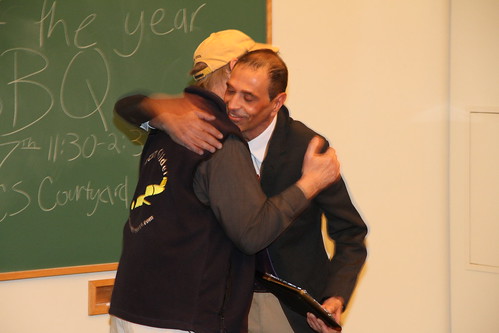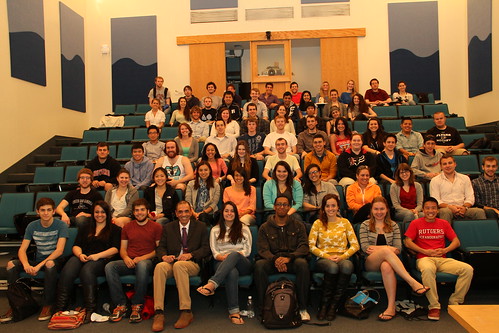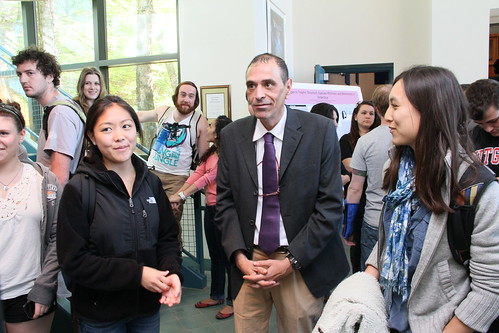Hey All
So after dropping Antonio off at Newark Airport this evening, we are coming to a close on a very interesting and productive week.
First off, on Wednesday Antonio graciously accepted his award for Technological Excellence at IMCS from Dean Ludescher

Antonio then gave an inspirational speech to the 70 students of the Ocean Observatories class

Then the students had the opportunity to share their research projects from this semester ranging from the spring bloom off of the Mid Atlantic Bight to the migration of mega fauna along the proposed Challenger Tracks and hazards they may cause to the audience of Antonio, their professors and deans.

Antonio also has made plans to return to Rutgers for a period this fall to collaborate on some more in depth research with the gliders and Challenger mission. And finally, Antonio spent quite a bit of time with our Hurricane group in which he proposed to make a simulation of the movements of Hurricane Sandy in Pinzon for both the Ocean and Atmosphere.
Now moving on to the spark behind our strong friendship with Antonio: our long duration gliders
Challenger seems to have maxed out the potential for surfing that semi favorable current and for the moment has lost some her momentum, slowing down from just over 30 km a day back down towards 28 km/day.
Antonio and his team also integrated a new tool into Pinzon, coloring the gliders course with the gliders velocity. So looking at the image below of Challenger’s path, we can see how over the course of the previous week the velocity had increased from blues (20-25 km/day) up to greens (~30 km/day)
Looking at the form of the currents in our location, it looks like they are continuing to flow in the north-northeast direction, however they have lost momentum themselves which we hypothesize is the reasoning behind Challengers drop in speed.
To the North, Silbo continues to struggle as the head current refuses to give him any leeway. There actually seems to be a strong subsurface current that is flowing at about a 70˚ difference than the weaker currents at the surface, resulting in Silbo’s slow progress. We can only hope that the strong west ward currents to the north west will provide us with some well needed help when we finally break through this poor current.
Looking back on the progress Silbo has made with the help of Antonio’s new tool, we can see how hard a time Silbo has had over the past few months as the path that represents the velocity of the glider has spent a lot more time in the blue than we would have hoped. Now we can only hope that we can increase and maintain the speed in the near future with the aid of these new visualization tools and our continued collaboration.
Force Wind Sea & Honor





Leave a Reply
You must be logged in to post a comment.